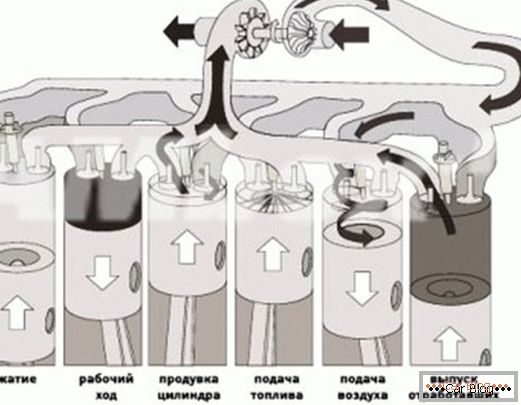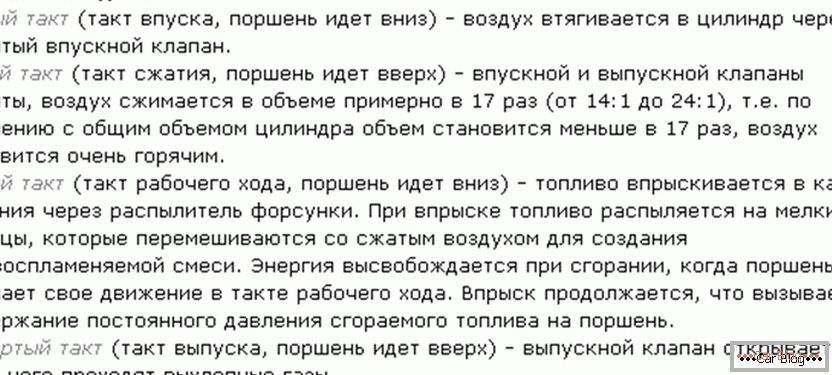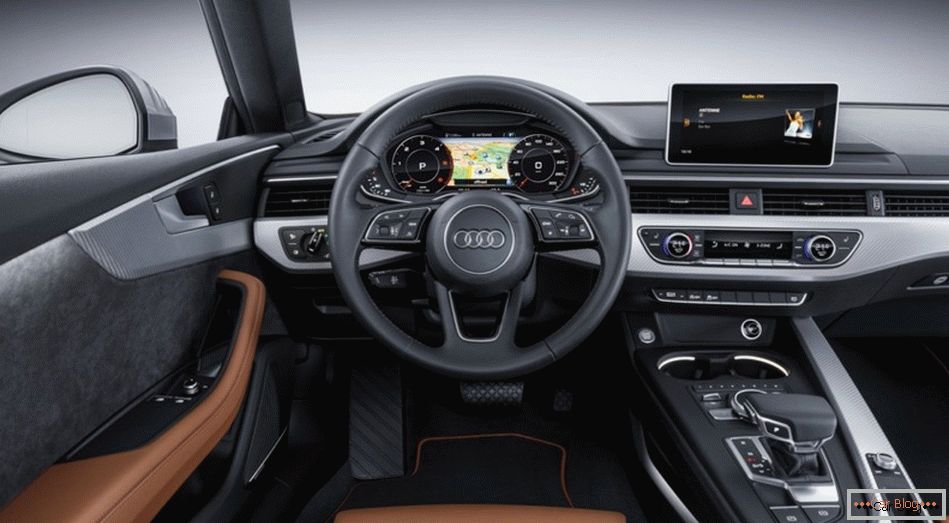"And instead of a heart a fiery motor"
Сегодня мы поговорим о таком важном моменте, как car engine unit. Эта деталь по праву считается сердцем любой машины. В настоящее время существует множество различных типов двигателей. Они различаются по ряду принципов работы, используемым типам топлива, объёму, количеству цилиндров и прочим характеристикам.
Internal combustion engines
By type of fuel, internal combustion engines are divided into gasoline and diesel. The principle of operation of the internal combustion engine is quite simple and it can be understood not only by a professional motorist, but also by ordinary people. We will try to explain it in general terms.
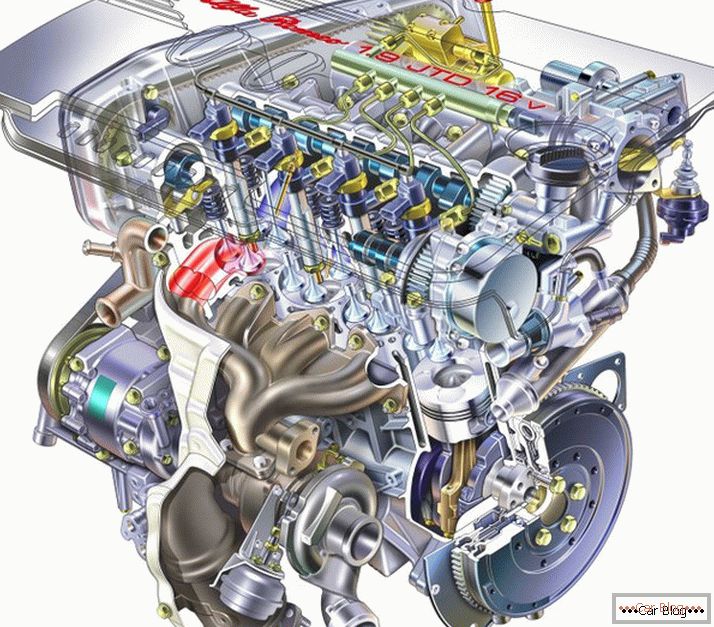 The illustration shows a classic gasoline internal combustion engine
The illustration shows a classic gasoline internal combustion engine
In a classic gasoline internal combustion engine, fuel (gasoline), mixed with air, is ignited with an electric spark from the ignition system.
How does the car engine
In order to produce the energy necessary for driving a car, the required amount of a mixture of fuel and air is fed into the combustion chamber in each cylinder of an automobile engine. After that, the piston moves the crankshaft, which, in turn, transmits movement to the wheels of the car.
The engine runs in several cycles
Modern internal combustion engines operate in four cycles. Virtually all the energy from burning fuel is converted into useful, because the efficiency of modern engines is much higher than that of their steam, coal and other predecessors.
The principle of operation of a modern 4-stroke engine is called the Otto cycle in honor of the inventor of the first internal combustion engine. Nikolaus Otto patented a prototype of modern engines back in 1867.
Otto principle - 4 main cycles:
- inlet;
- compression;
- working cycle;
- release.
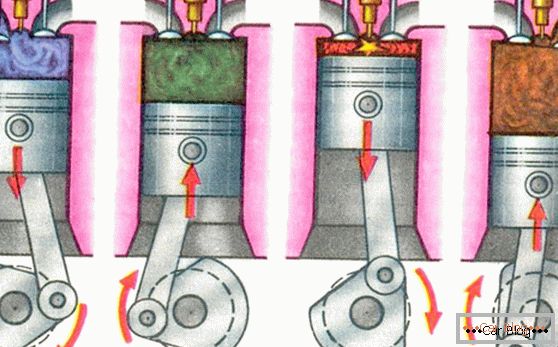
Produced in our time, internal combustion engines are of two main types: carburetor and injection.
The principle of operation of the carburetor engine is that the preparation of the air-fuel mixture occurs inside the carburetor - a special device connected to the engine. It depends on the carburetor a lot, if we consider specifically tuning the VAZ 2106.
The carburetor works in such a way that the fuel that enters it is mixed with atmospheric air, which is constantly drawn in by the engine. The injector works on a different principle. Fuel is supplied in small portions under air pressure using special nozzles. For example, in the old nines (VAZ 2109) carburetors still work, and in the new or tuned VAZ 2109 there are already injectors. Progress does not stand still, after all :)
Adjusting the amount of gasoline, or diesel fuel is due to an electronic device that transmits an electric pulse to the nozzle, which causes it to open at the right moment.
And this is how the engine looks like, which has undergone serious tuning with its own hands, or with the hands of a whole team of craftsmen.
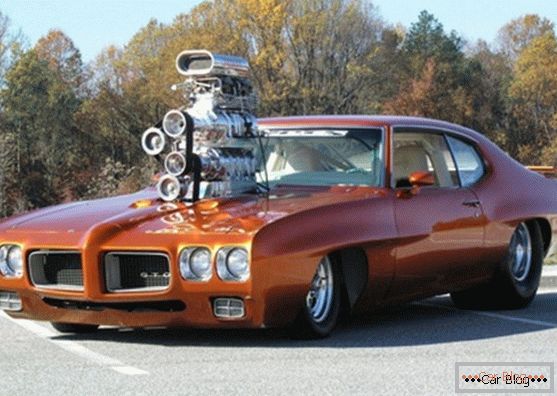
In addition to these basic systems, there are a number of additional engine related ones. These are ignition systems, engine start, exhaust system, cooling system and lubrication system.
Diesel engines
The diesel engine was invented and patented in 1897. The author of the invention is considered to be Rudolf Diesel, after whom the engine received the modern name.
A diesel engine differs from a classic gasoline engine in that the air masses do not mix with fuel, and are fed into the engine separately under pressure. As a result of compression, the air is heated to 700 degrees or more, and then fuel is fed into the engine.
Recommended article: Winter tires rating - best winter tires of 2018When the heated air is combined with the fuel, there is a fire that generates the energy that moves the piston. Diesel fuel is used in these engines.
